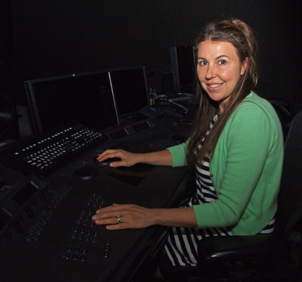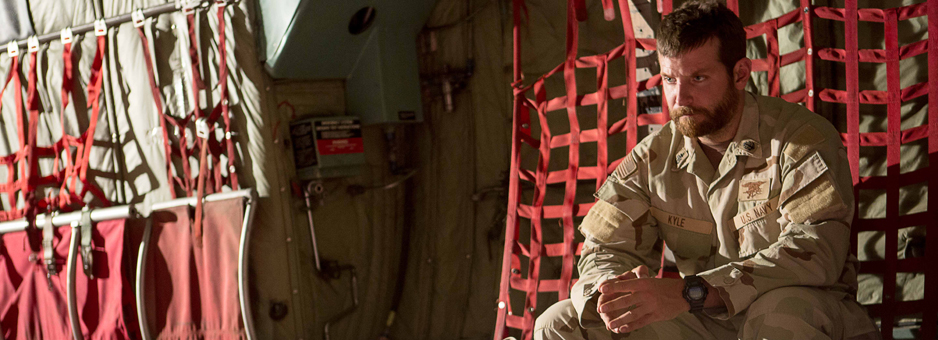Meet The Colourist
Maxine Gervais
Lead Colourist, Warner Bros. Motion Picture Imaging (MPI), Burbank
Maxine Gervais has been a lead colourist at MPI since 2009, working on many top movies since then. She is a talented artist with keen technical skills and is able to capture the sensibilities of the filmmakers with whom she works. She is a great advocate of using Baselight - whether on-set for early collaboration with cinematographers or in MPI’s grading suite - to perfect the look of each production.
What was it about the art of colouring that first attracted you to it?
Well, I studied fine arts for my bachelor’s degree. I was especially interested in photography, painting and sculpture. I’ve always liked Photoshop. Colouring just made sense and was sort of an extension of a fine arts education.
What sort of content do you work on?
So far, I’ve only worked on films. My very first job as a colourist was on a feature.
You’ve graded many great projects, can you just name a few and what’s special with them?
Harry Potter and the Goblet of Fire was my first movie ever, so that’s what’s special about that. Then there’s Speed Racer and Book of Eli. They were my first big extensive VFX films, each allowing for a great deal of creativity when establishing the look of the picture. They both hold a distinct place in my heart.
Most recently, I’ve worked on American Sniper with Clint Eastwood and Tom Stern, as well as the rest of the wonderful team at Malpaso. I feel we created a very unique look that has a strong narrative for the film. It was a fantastic collaboration and a very inspiring experience.
I’m also working with The Duffer Brothers on a movie called Hidden. We explored together and ventured into places I hadn’t been in awhile as far as “looks” are concerned, so we established a look very specific to the film. I am very pleased with how it turned out!I’ve been very lucky to work with DoPs like Guillermo Navarro, Julio Macat, Tom Stern, and many others. They’ve all been great, and I feel each one has given me a certain amount of freedom. Everyone has their own personality and sensitivity to different things, but they all allow me to do a first pass to balance things out and get the look in the right “ball park.” We then work on defining the look more extensively.
Depending on our relationship, I might have already done some of the “polish” work if I know what they usually go for. For instance, I might know they’ll want the corner darker, or to match the highlights, or whatever I see that I know intuitively they’ll want to do. This gives them more time to refine the look and work on other details. I find this way of working very successful.On a ‘typical’ feature film, what’s your starting point for finding the right ‘look’?
There’s always a conversation prior to the DI starting. We go over some of the material. We discuss some scenes. It’s even more helpful when I’m involved as early as the dailies (supervising it.) When it comes time to start on the picture, I have a pretty good idea of what the creatives want. Then it’s just a matter of translation, intuition, and inspiration.
How would you define your style of grading?
I definitely like to venture and explore new looks. I love when the colour has a strong narrative in the movie without taking you out of it. I don’t think I have a “style” per se - because the style is really in the photography. Every look has to be inspired by the cinematography. You can’t apply the same thing over and over. You have to re-invent, be creative, and let the material take you where it wants to go. I guess you could say that’s my “style.”
What advice would you give to someone looking to start a career as a colourist?
Well actually, I was thinking of starting a school one day. Ha, ha… No, I’d say, watch LOTS of movies. Go to exhibitions of photography and paintings. Work with colour apps like Photoshop. And take workshops at places like FilmLight! ;) But ultimately, there is no real way to learn. It’s like editing - you first assist; then you learn certain things; then you practice; and eventually if you’ve got the talent, you get an opportunity.
Not everyone has a good eye. And not everyone has the personality, the work ethics, etc… An eye for colour is not something you can necessarily learn or train for. You either have a good eye or you don’t. If you do have it, you can train it to have sensitivity to the hue, contrast and density shift between cuts. Then, if you can assist a colourist - and learn and practice more - ultimately you might get your window of opportunity. That can be in TV, trailers, commercials or feature films.
We are using Baselight EIGHT. It’s a powerful tool. It’s fast, can handle all formats, and can deal with CDL, EXR, and ARRI RAW within the software so there’s no need to debayer outside. We do our conform within Baselight as well, so it all stays in the same system. This makes it solid and takes out any variables that can slow down the process or create unnecessary issues.
What’s your single most favourite thing about Baselight?
What’s not to like about Baselight?! Aside from colour, it allows me to do quick VFX shots, edits and so on, I can view side-by-side timelines and play them in real-time. I can deal with any mixed format in real-time.
I’ve worked with a variety of different software, and there is nothing that serves me better than Baselight.
Do you enjoy working directly with the raw data within Baselight? What are the benefits?
This is one of my favourite things in Baselight.
Here we deal with RAW data from the dailies on. This allows you to catch issues such as dead pixels and so on and you have access to uncompromised material that has not been converted (debayered) by other software or processes. You can set your settings and have the metadata on or off, etc. It’s awesome.
Definitely. This is a big plus over all. If you can get involved in the dailies and be in sync with the DIT it helps a great deal. If the dailies have the proper level of contrast and density, close to what ultimately will be your starting point in the DI, it makes a big difference as people are getting used to seeing something not so far from the end goal.
Sometimes when you’ve been staring at washed-out dailies for months, you get very used to this look, and a radical change seems jarring. That’s normal. So starting the right way is better for everyone. You can also catch potential issues.
“Blurring the line between VFX and DI”, can you please comment?
This is more and more a reality. Today we work in collaboration with VFX in so many more ways than we ever did before. Some shots will even be submitted as a “potential DI fix” for crew member removal, wire removal, beauty work, split screens – we can comp different elements together, etc. I do more and more basic VFX work on every DI I work on. And I do it on the fly, so they can see it right away. But this is all still relatively basic and I’ll kick back anything I find that can be done better in VFX.
So what do you like to do after you have been in a darkened room all day?
Hang out with my beautiful baby girl and my husband. Cook and do some canning. Take care of our chickens. I love painting - it’s very relaxing. I also love reading books (made of paper.)
Well, I can say I went to the Peter Doyle “school,” and I think that was a great place to start. He definitely pushed me to be the absolute best I could be.
Who is your favourite actor, and why?
I can’t tell you my favourite actor, but I can tell you some of my favourite movies: Forbidden Games, Fargo, 8 1/2, Wings of Desire, Le Reine Margot, Cinema Paradiso, Once Upon a Time In the West, Memento, Snatch…
What's your favourite TV series?
I love The Walking Dead and Games of Thrones. (I’m also reading the books.)
Join In
If you want to participate in our MTC programme, we'd love to hear from you. Contact:
Alexa Maza
e: [email protected]

“I’ve worked with a variety of different software, and there is nothing that serves me better than Baselight.”
Details
Colourist: Maxine Gervais
Role: Lead Colourist
Company: Warner Bros. Motion Picture Imaging (MPI), Burbank
w: Warner Bros. Motion Picture Imaging (MPI)





